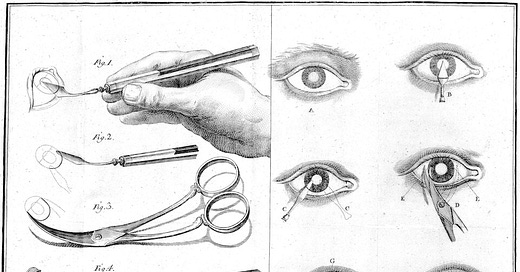The art business has a Gen Z blindspot
It's time to face up to the cultural rift dividing the under-30 crowd
Historical illustration of a tool for cataract surgery. Photo credit: The Wellcome Collection. Courtesy Look and Learn via Creative Commons license
Imagine you’re the bartender at a high-end cocktail destination. One of your regulars—a distinguished, attractive executive type nearing 60—is in a dimly lit corner flirting hard with a model-level twentysome…
Keep reading with a 7-day free trial
Subscribe to The Gray Market to keep reading this post and get 7 days of free access to the full post archives.





